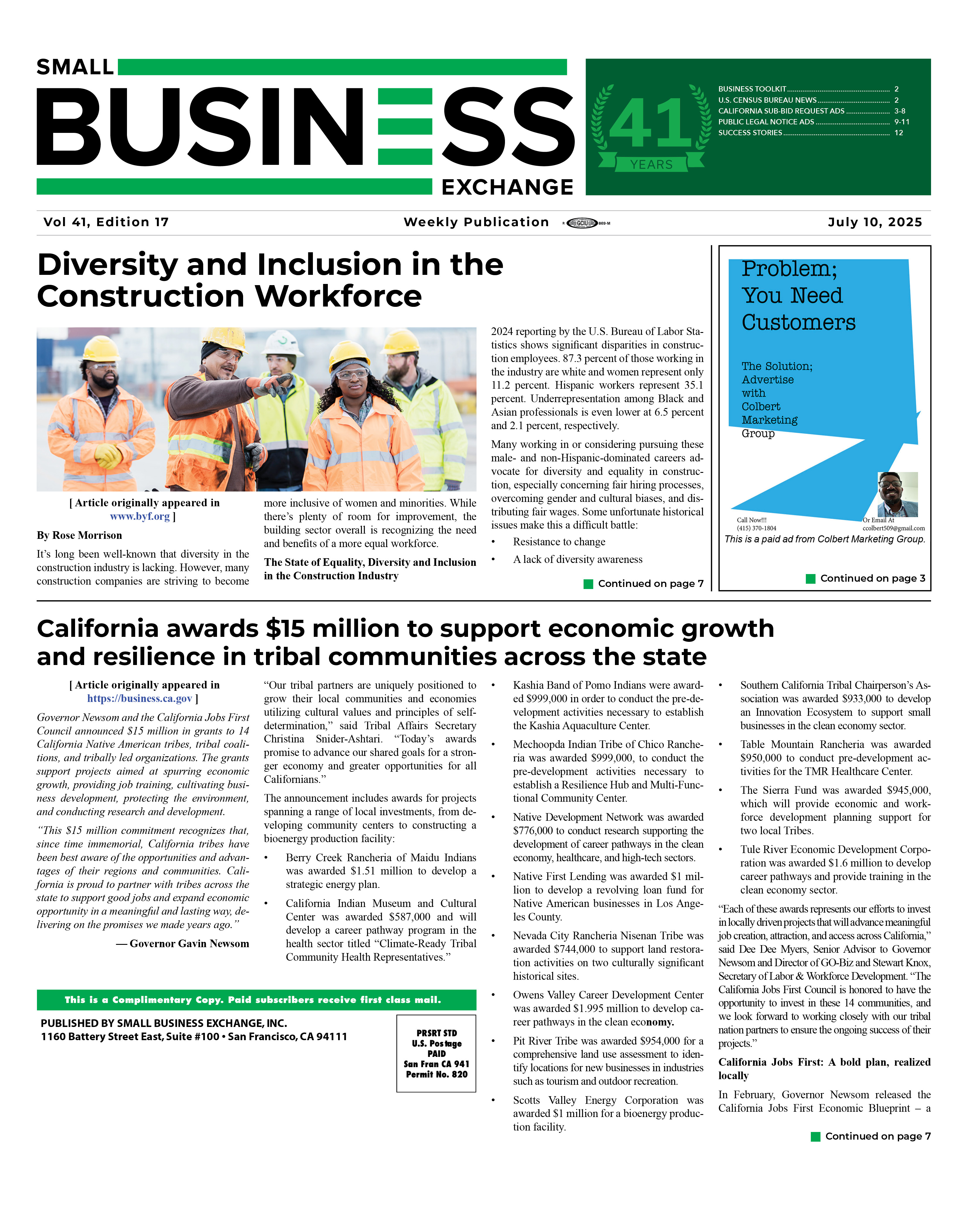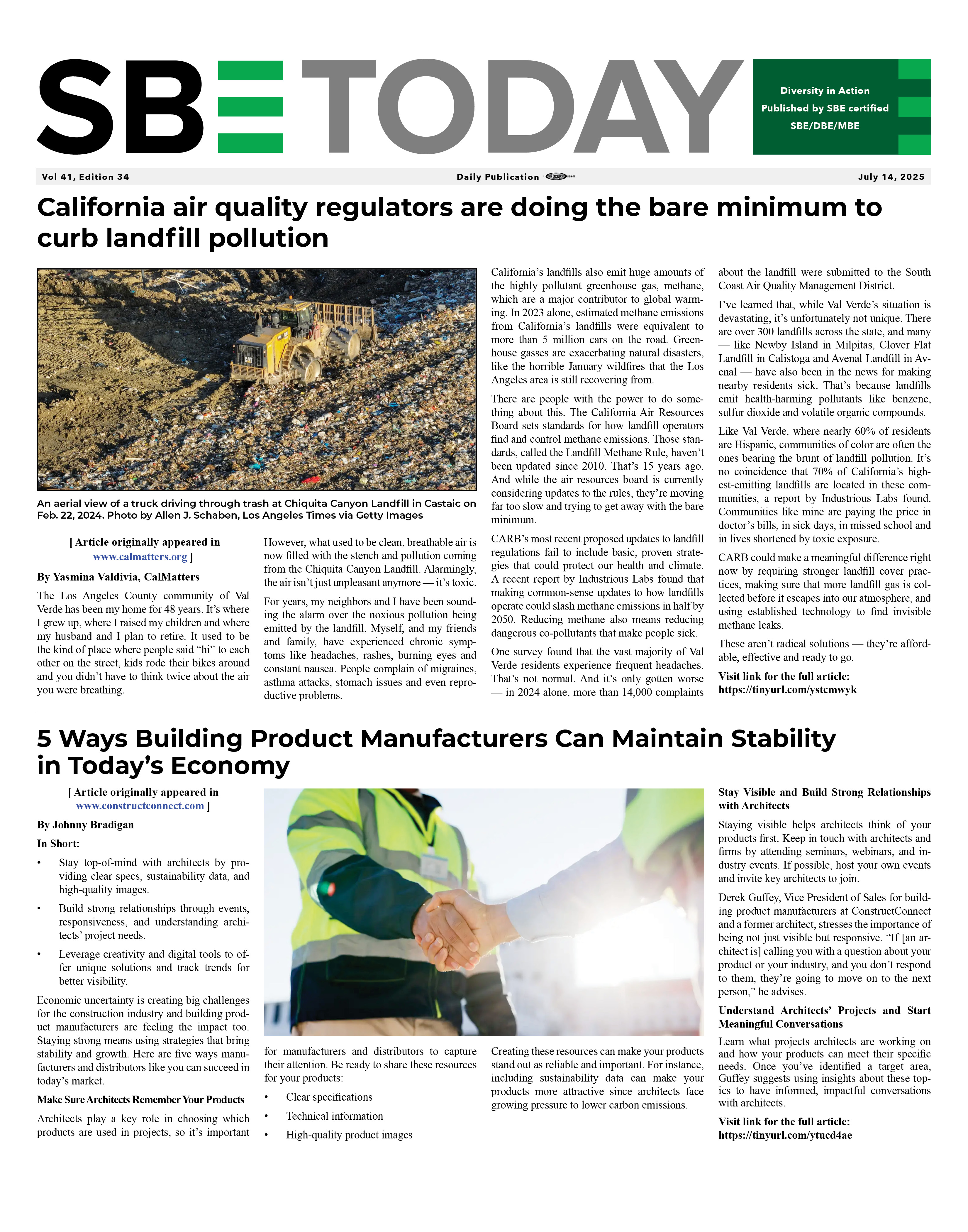|
|
California High-Speed Rail Authority to Make Public Recommendations for the State's Preferred Alternatives in Northern California
07/17/2019
The California High-Speed Rail Authority (Authority) is releasing the staff recommendations for the State’s Preferred Alternatives for the high-speed rail routes in Northern California. Today’s action kicks off the start of a comprehensive outreach campaign through the summer to gather feedback from the public on the staff recommendations for the Authority Board of Directors to consider in making their decisions in September. Major outreach events will include several community working group meetings in July, and six public open houses in August. Input received from the public regarding these routes will be presented to the Authority’s Board of Directors in September for consideration along with the staff recommendations.
In the San Jose to Merced project section, Authority staff recommends Alternative 4 as the State’s Preferred Alternative. Alternative 4 utilizes a blended configuration between San Jose and Gilroy in the existing Union Pacific Railroad corridor before continuing to a dedicated high-speed rail alignment through Pacheco Pass.
In the San Francisco to San Jose project section, Authority staff recommends Alternative A as the State’s Preferred Alternative. Alternative A includes a light maintenance facility on the east side of the tracks in Brisbane and does not include additional passing tracks in the middle of the corridor.
“The identification of the Preferred Alternatives is an important step in defining the program and advancing the implementation of the Authority’s Silicon Valley to Central Valley Line that will ultimately bring high-speed rail to Northern California,” said Northern California Regional Director Boris Lipkin. “In recommending Preferred Alternatives, we aim to find the right balance between system performance characteristics, environmental factors, and community factors.” In September, staff will present its recommendations along with the feedback received during outreach and will seek direction from the Board of Directors for which alternatives to identify as the State’s preferred routes. Subsequently, the draft environmental documents are due out in December 2019 for the San Jose to Merced project section and in March 2020 for the San Francisco to San Jose project section. While all alternatives will be evaluated equally in the draft environmental documents, identifying the State’s Preferred Alternatives will be guide the public to what is most likely to become the project. Final route decisions will be made at the conclusion of the environmental review process. All Meetings will run from 5 - 8 PM with the presentation beginning at 6.
Frequently Asked QuestionsQuestion: What does the release of the staff recommendation for the State’s Preferred Alternatives mean for the selection of high-speed rail routes in Northern California? Answer: This is a key milestone for Northern California because it represents the identification of the State’s likely preferred routes for the two Northern California project sections: San Francisco to San Jose and San Jose to Merced. Once the Authority has identified these two sections, the Authority will have completed the identification of all preferred alternatives for the Phase 1 system between San Francisco and Los Angeles. While identifying the State’s Preferred Alternative is not a final decision, it will guide the draft environmental documents and let the public and stakeholders focus on the most likely routes for the system. Question: What will you be bringing to the Authority’s Board of Directors in September? Answer: The Board of Directors will hold their monthly meeting in San Jose on September 17. At that meeting, staff will present the recommended State’s Preferred Alternatives for the two Northern California project sections, as well as the feedback that will be gathered in July and August from communities along the route. The Board will be asked to provide direction for which alternatives should be identified as the State’s Preferred Alternatives in the draft environmental documents that will be circulated in December 2019 for the San Jose to Merced Project Section and March 2020 for the San Francisco to San Jose Project Section. Question: Does identifying a preferred alternative mean that the Authority will stop studying the other alternatives as it moves forward? Answer: No. The Authority will study all of the alternatives to an equal level in the draft and final environmental documents. Identifying the State’s Preferred Alternative will point readers to what is likely to become the approved project at the end of the process but is not a final decision at this point. Question: How does the selection of the routes relate to construction happening in the Central Valley? Are you starting construction of the high-speed rail project in Northern California? Answer: This is a critical milestone in advancing project development in the Northern California region. While there is still 18 to 24 months of environmental clearance work in front of us, implementation plans will be developed after environmental clearance is complete. That work will start with advancing design, acquiring right-of-way, and relocating utilities before we could begin construction. Actual construction will require additional funding beyond the current sources available to the Authority. Question: Why are you approving these routes before you have the funds available to complete construction? Answer: The identification of the State’s Preferred Alternative is essential in providing a clear path for the high-speed rail project from San Francisco to the Central Valley. This is part of meeting our commitments to the federal government to complete the environmental clearance of the Phase 1 system by 2022. Projects often go through environmental clearance before having all of the funds in hand. This process better defines the project design and implementation and positions the Authority for additional funding sources. Question: Why should the public attend any of these upcoming meetings? Answer: These upcoming meetings represent another opportunity for members of the public to learn more about the staff-recommended State’s Preferred Alternatives, speak with staff, and provide important feedback. Over the course of developing alternatives for these project sections, the Authority proactively sought to initiate meaningful dialogue with stakeholders, resource agencies, municipalities, landowners, community leaders, and interested members of the public, often going beyond the extent of outreach required by California Environmental Quality Act (CEQA) processes. The Authority has also proactively engaged with many of our transportation partners in the region, including Caltrain, BART, VTA and Union Pacific Railroad, among others. The Authority has frequently held public meetings to inform the development of the project design and the preparation of the alternatives and their evaluation. Over the last three years, we have held over 400 meetings with stakeholders and community organizations throughout each of the project sections, and Question: What approach did Authority use to determine the State’s Preferred Alternative and why is that important for the Northern California project sections? Answer: The approach of presenting a State’s Preferred Alternative in the draft environmental documents represents a change in process for the Authority. For the Merced to Fresno and Fresno to Bakersfield project sections, the Authority and FRA identified the Preferred Alternative after the Authority and FRA issued the Draft EIR/EIS and received public comments but before issuance of the Final EIR/EIS. The Authority has chosen to modify the process to facilitate a more effective public comment period by identifying the State’s Preferred Alternative in the draft environmental documents. This allows the public, stakeholders, and public agencies to have more time to focus their attention and comments, if they so choose, on the Preferred Alternative. This approach aligns more closely with recent federal transportation laws that encourage the federal transportation administrations to name a Preferred Alternative in the National Environmental Policy Act (NEPA) Draft EIS project development phase rather than the Final EIS. It also more closely follows standard California Environmental Quality Act (CEQA) (Public Resources Code 21000-21189) approaches, under which a Draft EIR identifies and defines the proposed project (which is conceptually equivalent to a Preferred Alternative). Question: What is the staff-recommended State’s Preferred Alternative (PA) for the San Jose to Central Valley Wye project extent of the San Jose to Merced Project Section? Answer: Alternative 4 is the staff-recommended State’s Preferred Alternative for the San Jose to Central Valley Wye project extent of the San Jose to Merced Project Section. While all alternatives converge into one alignment through Pacheco Pass, they vary significantly between San Jose and Gilroy. Between San Jose and Gilroy, Alternatives 1, 2, and 3 are dedicated high-speed rail corridors while Alternative 4 is a blended system largely within the Caltrain and Union Pacific Railroad corridors. The alternative is distinguished from the other three alternatives by a blended, at-grade alignment that would operate on two electrified passenger tracks and one conventional freight track predominantly within the existing Caltrain and UPRR rights-of-way with a maximum speed of 110mph. By utilizing the existing rail corridor, this alternative minimizes property displacements and impacts on natural resource impacts, retains local community development patterns, improves the operational efficiency and safety of the existing railroad corridor, and accelerates delivery of electrified passenger rail services in the increasingly congested southern Santa Clara Valley corridor. In light of progress made in negotiations with Union Pacific Railroad about the use of their corridor for high-speed rail and blended Caltrain service, staff is recommending Alternative 4 as the State’s Preferred Alternative. While a final agreement has not been reached yet, Union Pacific has been supportive of the State identifying this corridor as the Preferred Alternative for purposes of the draft environmental documents. Question: What is the staff-recommended State’s Preferred Alternative for the San Jose to San Francisco Project Section? Answer: Alternative A is the staff-recommended State’s Preferred Alternative for the project section stretching from San Francisco 4th and King Station to Scott Boulevard in Santa Clara (where the San Jose to Merced project section starts). While both alternatives include modifications to the Caltrain Corridor to accommodate high-speed rail service, the main differentiators between the alternatives are the location of the light maintenance facility (LMF) either on the east or west side of the tracks in Brisbane and whether additional passing tracks would be needed between San Mateo and Redwood City or not. Alternative A includes the East Brisbane LMF and does not include additional passing tracks in the middle of the corridor.
With this alternative, High-Speed Rail stations would be located at the existing 4th and King Street and Millbrae Stations. The existing 4th and King Street Station would serve as the interim terminal station for the Project Section until the Downtown Extension provides HSR access to the Salesforce Transit Center. The East Brisbane LMF under Alternative A would be built on approximately 100 acres of predominantly vacant lands east of the Caltrain corridor. Additionally, the Authority worked closely with Caltrain and together the agencies have been able to develop a reasonable range of service plans for blended high-speed rail and Caltrain service without the need for the passing tracks in Alternative B. This is consistent with the analysis underlying the baseline growth scenario in the Caltrain Business Plan. Back To News |
|
|||||||||||||||||||||







